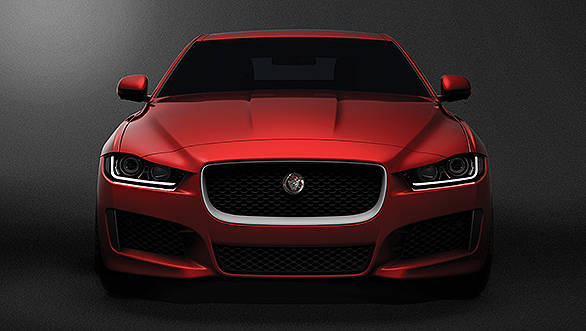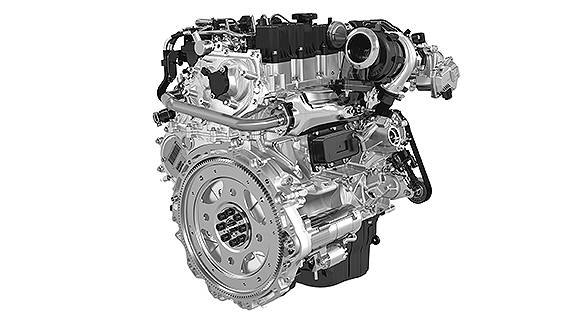Jaguar reveals engine and chassis information for XE sedan
After delivering a three-stage attack in the sportscar territory with three variants of the F-type, Jaguar is all set to upset the lowest rung of the luxury sports sedan segment with its XE which is slotted to come to India in 2015. After giving us a peek of its 3 Series and C-Class rival at the 2014 Geneva Motor Show, Jaguar will reveal the XE on September 8. The face is reminiscent of the XF and XJ's design theme, meaning that the XE won't debut any new design philosophy. What it will debut though is a new engine, a host of new technologies and probably the SVR badge on a Jaguar sedan.

New engine
Dubbed as the Ingenium range, the new turbo-diesel engine architecture boasts of being a modular setup that can be scaled up or down depending on the capacity and cylinder-configuration requirement. Each cylinder has a capacity of 500cc and a four-cylinder configuration with a 2.0-litre capacity will debut with XE. Jaguar hints that a 1.5-litre, three-cylinder and a 3.0-litre, six-cylinder motor are also on the cards for other Jaguar - Land Rover vehicles.

Compared to the current generation of engines, the 2.0-litre Ingenium oil-burner claims to be 80kg lighter with 17 per cent better frictional economy and best-in-class fuel efficiency. With electronically controlled oil-pumps, water-pumps and piston cooling jets, the engine can reach its optimum operating temperature faster, reducing CO2 emissions to as low as 100g/km and improving the thermal and energy efficiency.
New techThe XE will make generous use of aluminium across its chassis and mechanical components for a lightweight construction. The sedan will get the new Integral-Link rear suspension setup, which is compact in nature and is made from forged or hollow-cast aluminium. It not only allows larger wheel and brake sizes, but also has lesser vibration compared to a conventional multi-link setup. It is complemented by the double-wishbone front suspension borrowed from the F-type.
The XE will also debut Jaguar's first electric power-steering system that claims to be as precise as its hydraulic systems but promises to improve steering feel. The electronics have allowed Jaguar to finally introduce assists like automated parking and active lane keeping.
Speaking of assists and new technology, the XE will feature an 'All Surface Progress Control', which can get the car going on snowy or slate surfaces without the need of driver intervention. The XE doesn't make use of any claws for this, but instead features electronics that act like a rear differential and aid the car in gathering traction at slow speeds on slippery surfaces.
We managed to get behind the wheel of an early XE prototype and the results seemed pretty impressive. The most notable is the suspension setup, which seems to have rendered the rear seat comfort levels at par with the competition while achieving sharp driving dynamics. The XE prototype felt surprisingly stiff when thrown around bends and the road noise insulation even for a prototype seemed at par with its more expensive sedan siblings. The engine felt eager and had a noticeably strong mid-range. The production model is sure to be a lot more refined and if the foretaste we got is anything to go by, the XE could set new benchmarks for ride and handling.
Jaguar has already confirmed that XE will come with the F-type's supercharged V6 engine. But the sports sedan is also expected to spawn an SVR variant from its new special-operations department. Rumoured to use the F-type's 5.0-litre supercharged V8 engine, the XE SVR could deliver an output of about 500PS/600Nm, which should be good to take on the BMW M3 sedan and the Mercedes-Benz C-Class AMG.